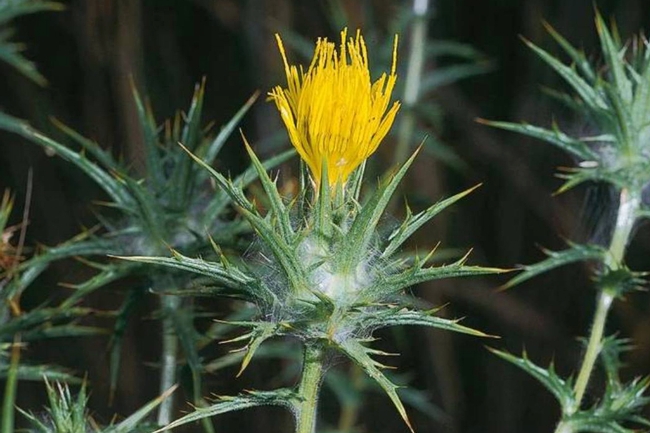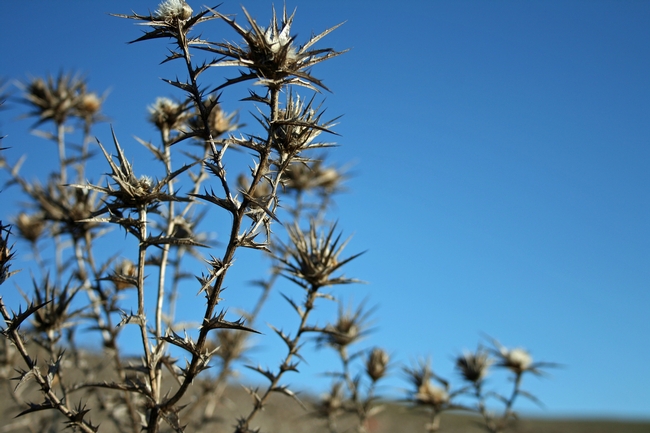
Woolly distaff thistle (Carthamus lanatus L.) is a yellow-flowered, spiny winter annual native to Mediterranean and central Europe. It has become a problem recently in northern California and southern Oregon. Ranchers in Marin County are reporting populations of distaff thistle so dense that they crowd out grasses and native species. The populations appear to spread along an elevation gradient, maybe along cattle trails.
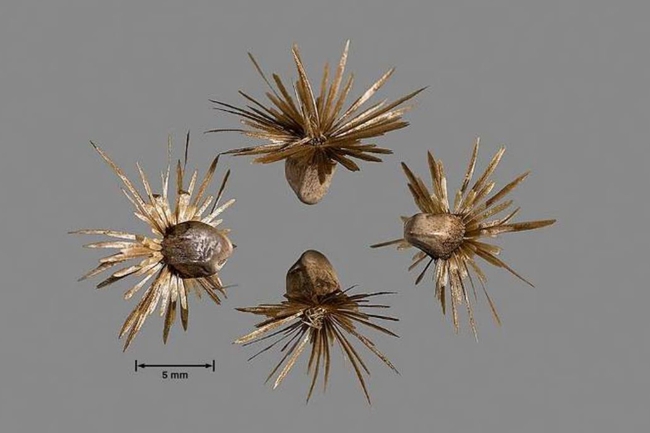
Organic growers have tried mowing distaff prior to flowering. This sets it back, but is not a long-term solution – not to mention the difficulties of mowing on steep hillsides. In one area, ranchers conducted a prescribed burn in June, which prevented thistle from producing any seed that year and resulted in a decrease in thistle the following year. But we expect that the soil seedbank will take a few more years to deplete (as much as 10 yr according to anecdotal reports), and without continued management distaff thistle will probably reinfest the site.
Biocontrol isn’t a good option for this species because it’s very closely related to safflower (Carthamus tinctorius L.), and can even hybridize with safflower. Fears are that the bugs could jump ship and start eating our crops instead.
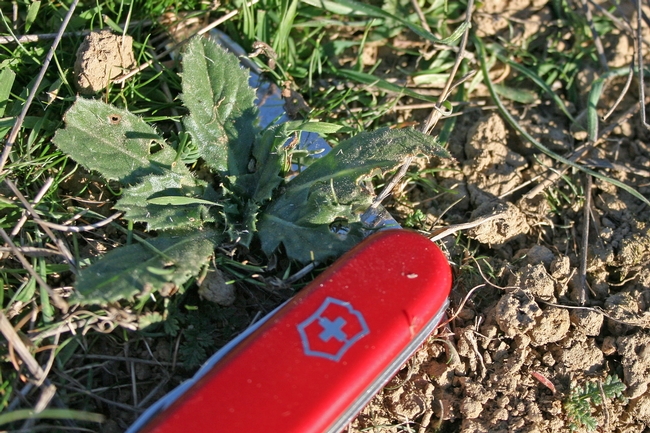
Distaff germinates starting with fall rains and throughout the winter, like yellow starthistle. Our best guess is that a mid- to late-winter application of Transline (clopyralid), Milestone (aminopyralid), or the unregistered compound aminocyclopyrachlor will be the way to handle this thistle. All of these compounds have both foliar and soil residual activity, so they’ll continue to control new seedlings as they emerge. The drawback is that these chemicals also kill off the current year's legumes. Again, management efforts will have to continue for several years to eradicate the populations.
A few ranchers have successfully used Transline this way. In other spots, the distaff thistle problem is so bad that some ranchers have reluctantly dropped their organic certification in order to deal with it.
Currently we’re conducting a distaff thistle control trial near Petaluma with clopyralid, aminopyralid, aminocyclopyrachlor, and aminocyclopyrachlor + chlorsulfuron at several rates and timings (fall, winter, and early spring). We hope to be able to tell local ranchers the best treatment, timing, and rate in order to maximize control while minimizing herbicide impact.
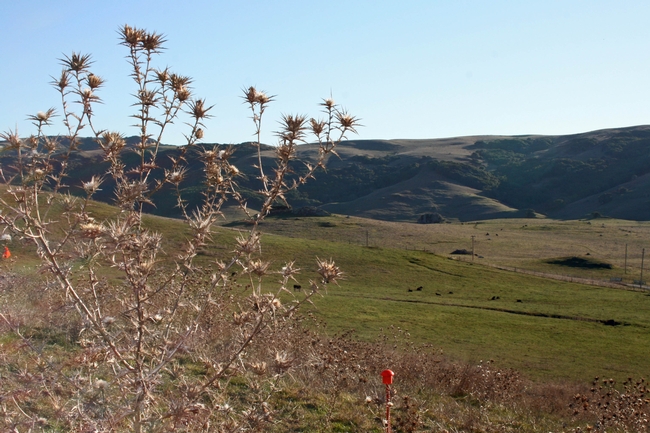
We don’t know yet whether herbicides can be combined with prescribed burning in an integrated management strategy for distaff thistle. In previous studies with yellow starthistle (a related species with a similar life cycle), we found that burning followed by Transline or Milestone is an effective treatment, because burning clears off existing vegetation, flushing the yellow starthistle seedbank and making it susceptible to herbicide treatment. If we can come up with a distaff thistle burn site in the next couple of years, that will be an interesting experiment.
One other problem with woolly distaff thistle: unlike yellow starthistle, it doesn’t mind the foggy weather in northern California coastal areas. In fact, land managers from the Point Reyes National Seashore say that they’ve seen distaff germinate throughout the summer with fog moisture. This could complicate our control strategy in those cooler, wetter areas, and we’d like to set up a study deeper into the fog belt to figure things out.
